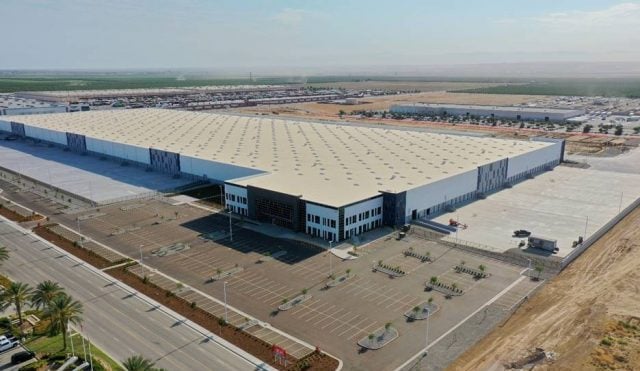This is an HTML version of an article that ran in Real Estate Forum. To see the story in its original format, click here.
The retail sector of commercial real estate has come a long way since the Great Recession. One of the areas most severely burned by the economic downturn, retail has risen from the flames and gone on to reinvent itself, creating synergized shopping centers and finding new categories of experiences for consumers—from eateries to wellness businesses. Retail is now considered one of the strongest sectors from an investment standpoint, taking the elements that once threatened it and turning them into assets.
In fact, the National Retail Federation's retail sales figures from March revealed a rebound that “shows that consumers have thawed out of the harsh winter weather and are returning to spending habits,” says Jack Kleinhenz, chief economist at NRF. “Several business lines are showing signs of thawing out . . . the early Easter played into the seasonal figures and provided some bounce.” Kleinhenz adds that although consumers will continue to spend on a selective and price-sensitive basis, “we expect stronger second-quarter growth as jobs and income growth pick up.”
A big part of retail's strategy has been to accept that a different model of consumer has come to the forefront. Millennials make up the bulk of that cohort, and they shop very differently from the ways their parents and grandparents did. Recently, Rick Chichester, president and CEO of Faris Lee Investments, told Real Estate Forum's sister publication GlobeSt.com that, not surprisingly, the Millennial push is driving a lot of retail's shifting nature, and he tracked a trend toward a “new age” of retail in the urban core, “responding to the live-work-play phenomenon.” Retailers with forward-thinking brand identities—those that, as part of their business model, keep pace with generational trends—are expanding in the core and urban markets, while more traditional retailers are expanding in the suburbs. And some of the more traditional retailers are competing by “changing their business models to draw that Millennial consumer. They're getting into organic options, aligning themselves with relevant celebrities or products and repositioning or redesigning to create more experiential environments.”
Chichester now tells Forum that the most significant adjustments the retail sector has had to make due to shifting demographic trends are those specifically dictated by Millennials, “to make retailing exciting, relevant and experiential. It is more about the experience than the material acquisition. The buying environment needs to be relevant, as much as the product needs to be relevant.”
Gone are the days when retailers, or even shopping-center owners, based their strategy on aggregate consumer data, Chris Hite, president of Coreland Cos., tells Forum. “Today, there is no average. Today's consumers, especially Millennials, are individuals who demand personalized resources and attention.”
Hite adds that retailers are also adapting to meet the needs of niche communities, which is exactly the motivation behind every build-it-your-way restaurant concept that has guided the industry for the past decade, like Chipotle, Pizza Rev and Yogurtland. “It's the same reason why specialty grocers have experienced such growth. They've been able to personalize the experience and better target their customer.”
[IMGCAP(1)]
The rapid growth of platforms to serve the online and mobile consumer is one of the most significant adjustments American Realty Advisors sees, according to Chris Macke, managing director of research and strategy for the firm. Macke tells Forum, “Millennials increasingly demand that retailers come up with solutions that meet their consumption pattern through today's electronic channels rather than relying solely on traditional 'bricks-and-mortar' approaches their parents knew. This will only increase as this cohort ages and increases their percentage of total sales. In addition, as Baby-Boomer consumption is increasingly shifting from goods to services, this will impact the way that retailers deliver goods to consumers.”
The retail sector has had to make many adjustments in order to thrive in a rapidly changing consumer environment, Cary Lefton, CEO of Agora Realty & Management, tells Forum. “As consumer buying habits have changed, demographics of the target audience become even more important in terms of the platform and strategy to ensure success. The most-significant change to our strategy is enhancing our centers' visitor experience by adding engaging programming and increased tenant participation in promotions and events. Secondly, our tenant mix is gradually shifting more toward food and entertainment to generate traffic, and the soft goods and services become the beneficiaries.”
Echoing Chichester's comments, Faith Hope Consolo, chairman of the retail group at Douglas Elliman Real Estate, tells Forum that retailers are opening urban stores to reflect the shift of the population back to cities, one of the most significant global trends of the past 20 years or so. “Retailers traditionally found in malls and open-air centers, from Charming Charlie to Walmart and Target, are coming to urban streets. They're adapting their prototypes and merchandise offerings to accommodate shoppers without cars and finding a way to embrace the density on which urban retail thrives. Many are diversifying their merchandise mix to accommodate increasing ethnic diversity, ensuring the right merchandise is in the right market (think Macy's and Thalia Sodi.).
[IMGCAP(2)]
Shahin Yazdi, SVP of George Smith Partners, tells Forum that online retail satisfies Millennials' need for instant gratification, providing them anything they may desire right at their fingertips as fast as possible. “As a result, the retailers in the more-traditional brick-and-mortar sector have had to quickly establish strong online presences to stay competitive. Even grocery stores are facing increasing online competition as Google Express and Amazon Fresh continue to grow in popularity. These grocery-delivery services allow Millennials to purchase the grocery items they need without leaving the comfort of their own home and have products delivered quickly, often on the same day the order was placed.”
Online retail is also deeply impacting the physical attributes of brick-and-mortar retail, says Yazdi. “Many retailers have now shifted to smaller physical stores while adding larger warehouse spaces to accommodate the ever-increasing volume of online shopping.”
While Millennials still want to shop, for this generation it's all about convenience and speed, Yazdi adds. “To meet this demand, many traditional retail stores are concentrating their smaller brick-and-mortar locations in urban settings, and many are selecting mixed-use sites. Millennials favor this walkable living environment and flock to retailers located just outside their doorstep.”
According to Derrick Moore, a principal at Avison Young, the reason many retailers have put a large focus on purchases from Millennials is because of the “tremendous amount of information that retailers are able to collect from Millennials' purchases via the online market. Significant shifts have occurred from print advertising to online marketing and social-media outlets.”
[IMGCAP(3)]
The way in which consumers are purchasing goods and services today has changed how retailers interact and communicate with them, says Moore. “Smartphones, tablets, social media and the abundance of information generated by having 24/7 access has changed marketing strategies. Retailers are much quicker to respond to consumer comments and adjust advertising accordingly. Also, many of the ads are driven by social media and 'likes' or smartphone-enabled ads vs. traditional print media. If advertising isn't 'smartphone enabled,' it's probably not getting noticed.”
The new consumer buys socially, Chichester points out. “They're not just shopping on- and offline in isolation. Rather, they research and make decisions based on comments and recommendations via social media—peer-to-peer communications. To that end, retailers are developing multiple communication channels and providing consumers the opportunity to engage and comment. Additionally, retailers are tracking more of the consumer's interests and habits and creating a more personalized shopping experience through tailored, relevant, individual communications of product information.”
Moreover, advanced technology has developed and enabled a well-informed consumer, says Hite. “Price and product comparisons take little to no effort online. Your neighborhood sandwich shop or dry cleaner with poor service can't skate by anymore given the influence of Yelp. These resources weed out poor operators faster than ever.”
Technology and mobility also allow small start-ups to gain market share more quickly, Hite adds. “Social-media outreach has taken word-of-mouth to a completely new level, reinventing the speed at which a brand can establish itself and grow.”
Macke points out that as a result of the recession and continued relatively weak income growth, consumers are increasingly looking for value, meaning not just low prices but lower prices on branded/quality goods. “Just 'cheap' isn't good enough anymore—now it has to include significantly discounted pricing on higher-end label goods. This is hurting old-line department stores that traditionally serve middle-income consumers and simultaneously benefitting those retailers who have figured out how to deliver quality at an attractive price.”
Since many of the consumer's essential goods are now being purchased on the Internet as if they are a commodity, retail centers are more challenged to use creative means to generate traffic, says Lefton. “Consumers can find specific merchandise at the lowest price offered and have it delivered to their door within 24 hours or less. In order to entice that consumer to leave the comfort of their home, the brick-and-mortar side of the industry needs to create an engaging and entertaining experience every time one visits a retail center.”
For years, since consumers are doing a lot more research online before a major purchase, the retail sector has been worried about showrooming, where shoppers test a product in the store and then buy it online for a lower price, says Consolo. “That does take place to some degree with electronics, but what's really happening is web-rooming—thoroughly researching items and then going to the store for a final in-person test and purchasing (usually with a few other items added in). They're buying much more prepared fresh food, but not always in supermarkets: drugstores have become general-merchandise stores where you can get your prescriptions and lunch in the same visit. Shoppers want less stuff, more experiences, so stores are trying to become more social, offering classes, food and events.”
[IMGCAP(1)]
Retailers, therefore, are including much more information on their websites, making returns free or offering to take them in-store (where, of course, shoppers will buy more), Consolo adds. “Boutiques like Tommy Bahama and Ralph Lauren are placing coffee bars and even full restaurants in their stores. Fashion shows, classes and more are taking place, too.”
Now that finding the best price for an item requires little more than looking it up on the Internet, most stores—even mom-and-pop retailers—are offering price matching as a way to keep business that would have otherwise been lost to a cheaper online price, says Yazdi. “Adapting and staying competitive are key in today's retail landscape.”
In addition, as online sales soar, retailers are making these sales more of a priority in their business operations, Yazdi adds. “Those retailers that have embraced their own online retail components are focusing on online sales, giving them the same importance as brick-and-mortar sales.”
Product returns are another area that has changed in response to the demands of today's consumer, says Yazdi. “Millennials want convenience in terms of returns. Providing an easy way for shoppers to return online purchases to a physical store has become a necessity for retailers.”
[IMGCAP(2)]
This activity continues to guarantee the survival of the physical retail location, Yazdi says. “In fact, many online retailers are now partnering with or establishing a brick-and mortar presence as an added convenience to their online shoppers. By doing so, these e-retailers are providing shoppers the opportunity to not only return product but also to browse items in-store.”
Moving forward, we are likely to see more online purchases and smaller physical stores, says Moore. “Brick-and-mortar will not go away, but we may see them shrink or be combined with other retailer categories like food and fashion.”
Chichester says he would expect to see more retailers looking to adopt the high-touch, high-energy, personal-service environment of Apple retail stores, “along with the online ease of shopping on Amazon. Online and in-store will become a seamless, integrated and holistic experience.”
As mobile apps become more efficient and same-day deliveries become the norm, buying habits will continue to change, says Lefton. “Developers will strive to find thematic approaches to their centers in order to appeal to the evolving needs of their visitors. For example, at Plaza Del Valle in Panorama City, CA, an old movie theater has been transformed into a banquet hall that seats 300 for wedding receptions and quinceañeras—a Latin-American coming-of-age celebration for 15-year-old girls. One building has been removed to allow street views into the center, and our programming includes music, children's activities and community events every weekend.”
Over the next 10 years, the graying of America will shift consumption among Baby Boomers even more from goods to services, and this cohort will spend less overall since spending at a certain point decreases with age, Macke predicts. “Astute investors will target on 'medtail' providers—retail formats that increasingly offer services including health/medical services—that can successfully profit from the fusion of two major parts of senior consumption patterns.”
© Touchpoint Markets, All Rights Reserved. Request academic re-use from www.copyright.com. All other uses, submit a request to [email protected]. For more inforrmation visit Asset & Logo Licensing.






